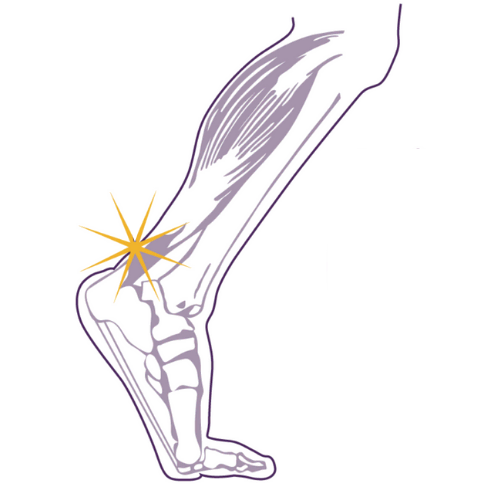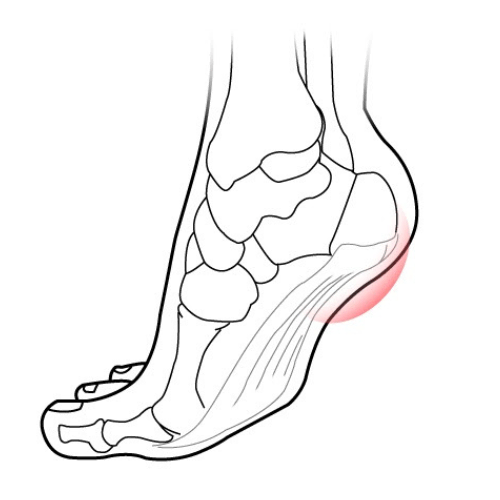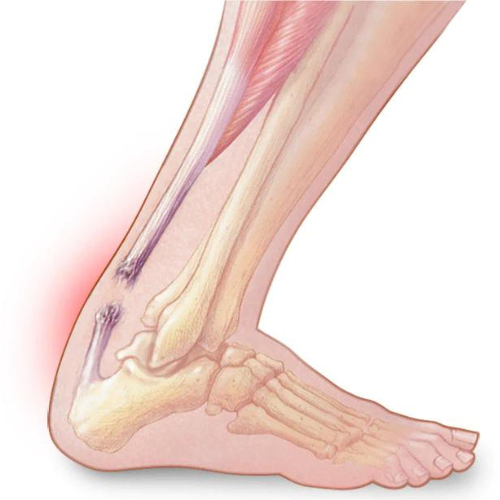
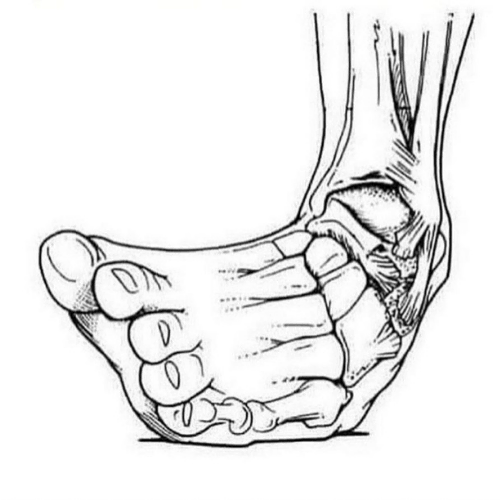
An ankle sprain is an injury to the ligaments connecting the lower leg bones to the foot. This happens when the foot is suddenly and forcibly inverted (foot turns in) or everted (foot turns out). An inversion ankle sprain is the most common mechanism of a sprained ankle and is one of the leading injuries in sport. It is estimated that the incidence of ankle sprains in sport is between 15-45%.1 The true incidence of ankle sprains in the general population is unknown because more than half of all ankle injuries go untreated.2

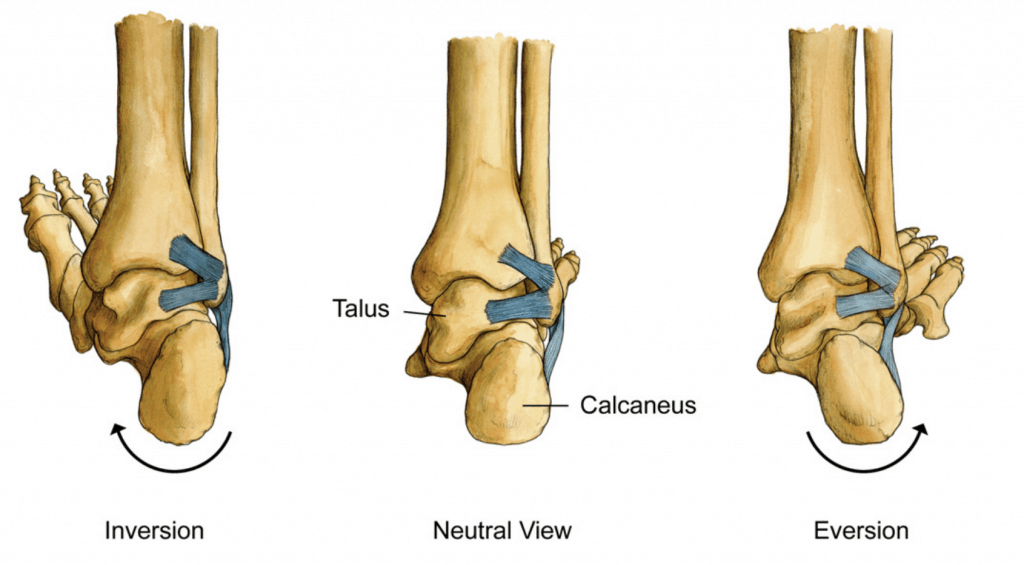
There are three main ligaments on the outside of the foot that are commonly injured with a twisted ankle – the anterior talofibular ligament (ATFL), the calcaneofibular ligament (CFL), and less frequently the posterior talofibular ligament (PTFL).
These ligaments are important because they provide mechanical stability to the ankle joint. The ligaments also provide sensory feedback to the brain to help with your body’s proprioception – the ability to determine where you are in your environment. When the ligament is damaged, sensory feedback also becomes impaired and without appropriate treatment, it can lead to a higher risk of recurrent ankle sprains.
Ankle sprains can be separated into three categories based on the severity of damage to the ligaments – Grade I, II, and III.3
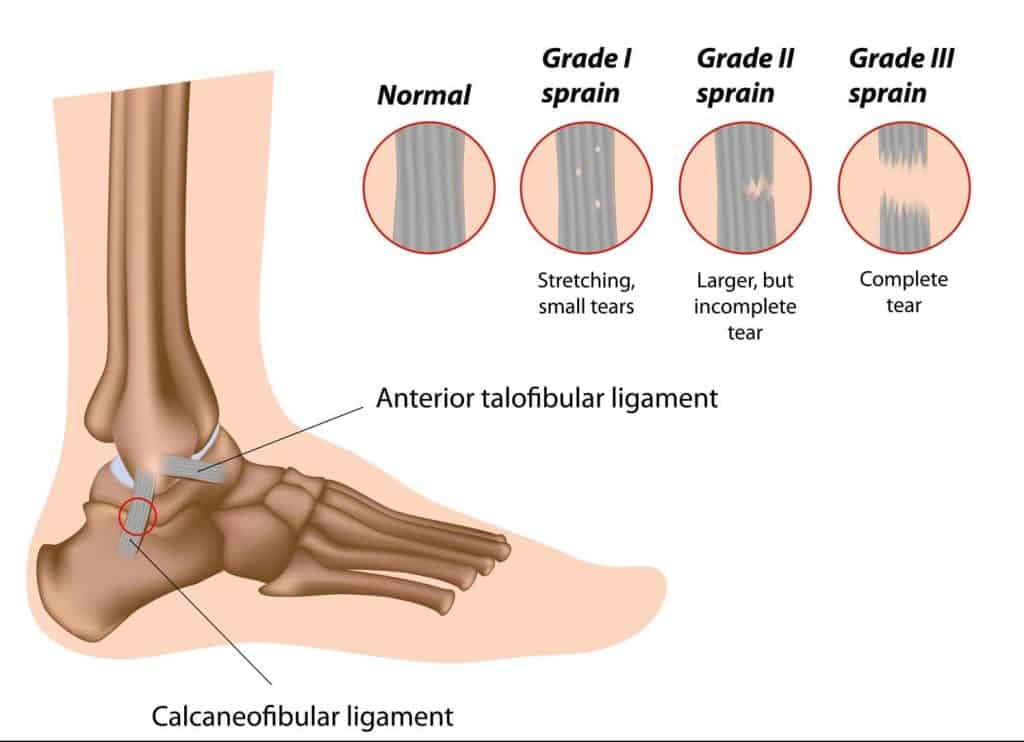
Grade I injuries involve microscopic tearing of the ligament. There may be some discomfort and point tenderness, but no excessive movement at the joint – known as laxity – is present. Grade II ankle injuries have more noticeable symptoms including swelling, bruising and a larger area of tenderness and mild ligament laxity may occur. Grade III is a complete rupture of the ATFL, possible involvement of the CFL, and noticeable joint laxity.
There are specific criteria called the Ottawa Ankle Rules (OAR) that can help determine the need for an x-ray to rule out an ankle fracture.4 An x-ray is recommended if you have an inability to walk after the injury or tenderness to touch over certain areas of the ankle bone. These rules have nearly 100% sensitivity – meaning that they are unlikely to miss someone with an ankle fracture. The OAR is more reliable when performed within one week after the initial injury.
If you recently suffered from a twisted ankle, there are a few acronyms that you may be familiar with: RICE, PRICE, and POLICE. RICE stands for Rest, Ice, Compression, Elevation. This was updated to include the P for protection. More recently, the acronym has substituted the R to OL for optimal loading. Recent systematic reviews fail to show a meaningful improvement in outcomes by using ice, compression or elevation, however we still recommend their use if needed for pain relief.
Optimal loading is the most important factor to recover from an ankle sprain. The term encompasses all stages of rehab, but in the acute stage it refers to loading the structures of the ankle in a way that allows them to favourably adapt. For most ankle sprains, instead of immobilizing the ankle in a boot or over-protecting it through excessive rest, optimal loading speeds up your return to your activities or sport. Starting a rehabilitation program immediately after an ankle sprain can significantly improve outcomes.5
In the case of a very severe ankle sprain, immobilizing your ankle in a boot for a brief period may be beneficial. However, the research is clear that for the majority of ankle sprains, early functional rehab is better than immobilization.6 In mild to moderate ankle sprain injuries, a soft lace-up brace that allows movement of your foot can be helpful as well.
Swelling is an important part of the inflammatory process to kick start healing. Clinically, we measure swelling using the figure-of-eight measurement.7 This is one of many measurements we record to track changes in your recovery over time. Pain levels tend to decrease when swelling begins to subside. In general, most people experience a significant drop in pain in the first two weeks after an ankle sprain.
Many people take non-steroidal anti-inflammatory medications (NSAIDs) such as Advil to reduce swelling after an acute musculoskeletal injury. Recent studies have looked at the consequences of NSAIDs on tissue healing. One report showed less pain and a faster return to activities in individuals after a grade II lateral ankle sprain.8 However, there was decreased range of motion and greater ankle instability in the group that took NSAIDs, suggesting that premature return to sport compromised healing.
To answer this question, let’s discuss how ligaments heal. There are three phases that ligaments undergo to heal – the inflammatory, reparative and remodeling phases.3 Inflammation occurs over the first 72 hours, whereby the injury site is flooded with important substances that promote healing. In the reparative phase, damaged cells are replaced by healthy cells. Collagen – the protein responsible for giving ligaments their strength – begins to form in a disorganized fashion. This process begins after 3 to 5 days and lasts for roughly two weeks. During this phase, the ligament can resist only small amounts of force. Returning to activities too soon can disrupt the healing process and lead to the ligament healing in an elongated position, which is a risk factor for developing chronic ankle instability. In the remodeling phase, collagen fibers connect with one another and align in the direction of the forces placed on them, increasing overall strength. As the ligament begins to heal, the ankle joint should become more mechanically stable. The ligament can take up to a year to regain 80% of its pre-injury tensile strength.9 In general, most studies cite that ligaments take 6 weeks to 3 months to heal post injury.9
The disruption of the stability of the ankle, the muscle inhibition due to pain and swelling, and the reduced sensory feedback to the brain all need to be accounted for when designing a rehabilitation program. The demands of your sport are also an important factor to consider.
In general, there are six main categories of exercises that must be included in your training program.
In the acute and sub-acute phases, when swelling is still present, it is important to begin mobility drills to prevent a stiff ankle. Here is an example of a mobility drill to improve ankle dorsiflexion:
Balance exercises train your ankle proprioception so that you can prevent recurrent ankle sprains. They have also been found to improve range of motion and decrease pain.10 Balance exercises can be creative and incorporate elements from your sport. The exercise below uses a soccer ball to challenge balance:
Muscle strength is impaired after any injury due to pain, swelling and rest. Pain and swelling inhibit normal muscle function. This is a natural response of the body designed to protect an injured area. Secondly, muscle strength decreases significantly after a period of unloading. Here is an example of an ankle strengthening exercise:
Ankle endurance is also significantly impacted after an ankle sprain. The muscles supporting the ankle, such as the calf muscles, need sufficient endurance for activities such as walking and running. Endurance training can help decrease the risk of fatigue-related ankle sprains. In one study, Badminton players performed lateral jumps before and after intense practice and found that peak ankle inversion was greater in the fatigued group.11
A plyometric exercise is a fast movement that involves an energy storage and release phase – such as a jump. Plyometric drills are usually introduced in the later stages of rehab:
Before returning to sport, you must be comfortable with the demands of that sport. This category includes running, sprinting, agility drills and sport-specific movements.
Ankle sprains benefit from external support for at least 6 months after injury, although the positive effects appear to be additive to a well structured exercise program.12 The lace-up brace is the recommended type of brace because it provides support while still allowing for normal movement of the ankle.13,14 Supportive taping can also be used and is useful in the early stages.
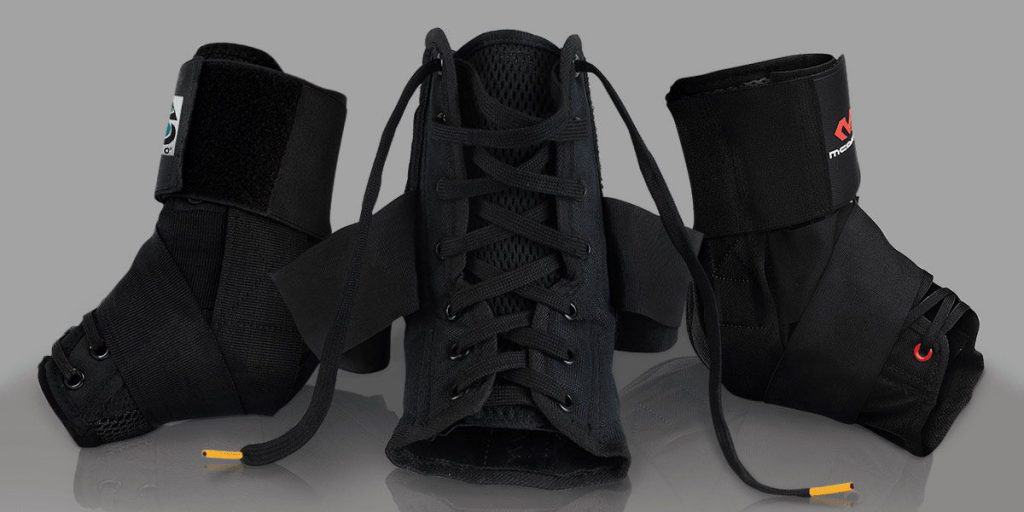
Earlier, we mentioned that the disruption of sensory signals to the brain after a rolled ankle can alter proprioception. It can also lead to slower reaction times. A recent case study measured the accuracy and information processing speed of basketball players with chronic ankle instability (CAI). A computerized neurocognitive test showed reaction time delays in those with CAI. It’s possible that musculoskeletal injuries, including lateral ankle sprains, can lead to changes in the brain that affect cognitive performance in athletes.15
The timeline to return to sport is specific to the individual and the severity of their injury. More than half of people with ankle sprains recover within 6 weeks, however over 40% will continue to experience dysfunction at 6 months.2 Considering that greater than 50% of ankle sprains go unreported, this is a significant number of people who ignore an injury that can potentially have negative long term effects.
At Kinetic Labs, we use a mixture of time-based and criteria-based rehabilitation. Time-based progressions take into account the natural healing time of the injured structures. Criteria-based rehabilitation sets milestones to achieve to progress through therapy.
Recurrent ankle sprains are a common problem. It is estimated that 70% of people with a first time ankle sprain will experience a second one.2 Major reasons for this include a lack of treatment, inadequate rehabilitation or returning to sport too soon. One consequence of recurrent ankle injuries is a condition called chronic ankle instability (CAI).
CAI occurs when ligament stability is altered, leading to frequent “giving way” sensations of the ankle. It can develop after a major ankle sprain or recurrent sprains, especially when multiple ligaments are involved. Individuals with CAI have reduced strength in their lower leg muscles (foot evertors and plantarflexors), dynamic balance deficits, increased pain and altered biomechanics of the ankle.16,17,18
The best way to prevent CAI is through proper rehabilitation after the initial injury. Fortunately, there are tests that can be done during rehabilitation that predict the risk of developing CAI. One study found that the inability to complete jumping and landing tasks two weeks after an ankle sprain put you at a higher risk of CAI.19
Overall, an ankle sprain should be taken seriously. While they tend to improve fast, there can be functional deficits that remain long after the tissue has healed. If you’re an active person, this can not only impact your performance, but can also predispose you to future injuries.


